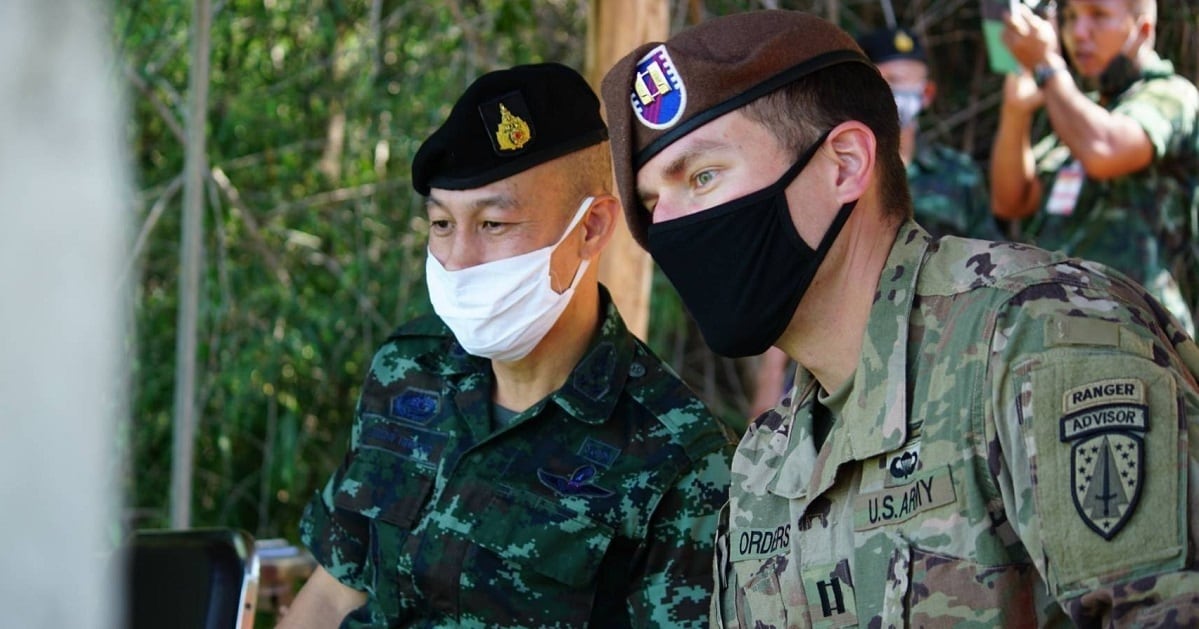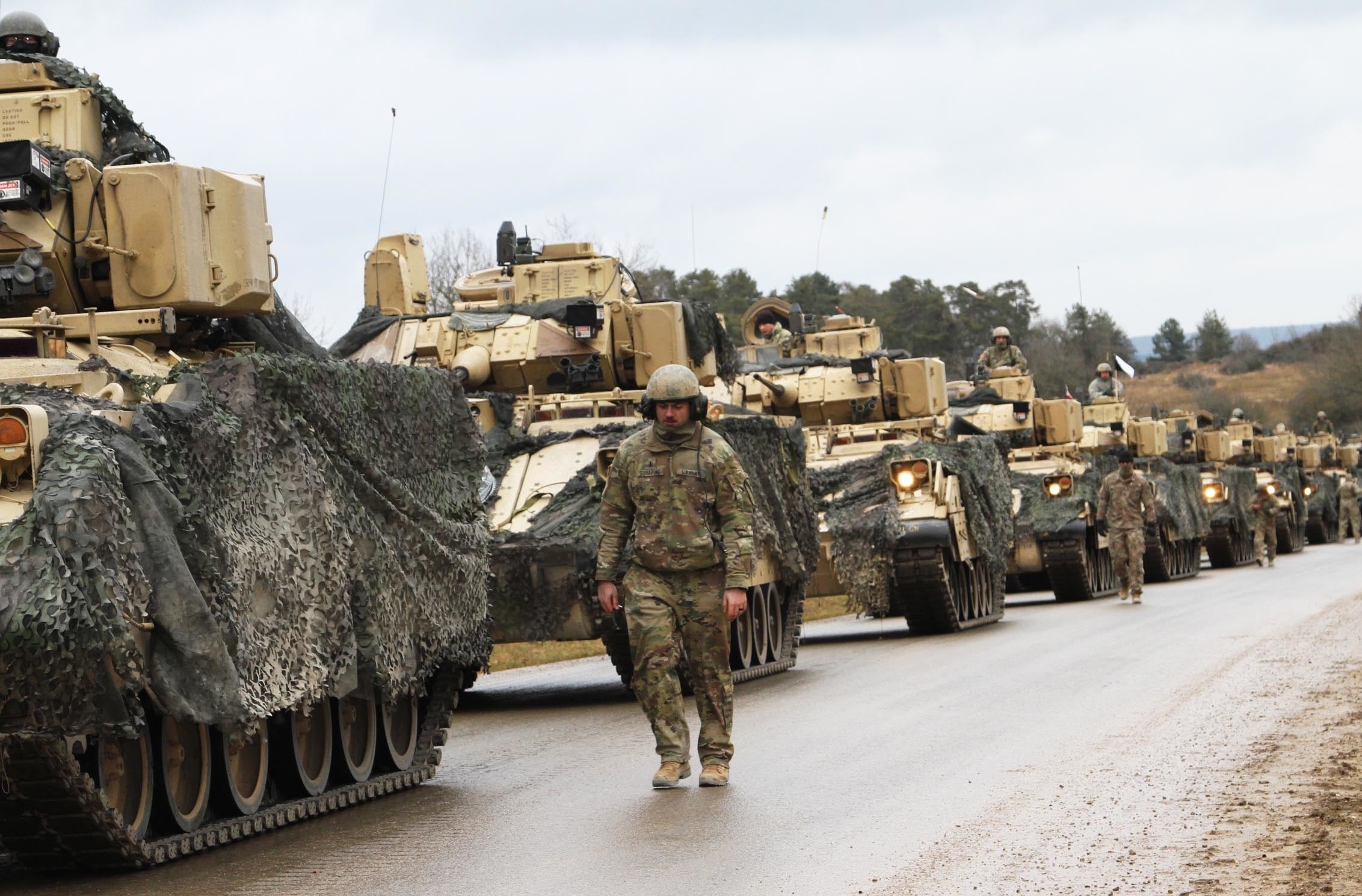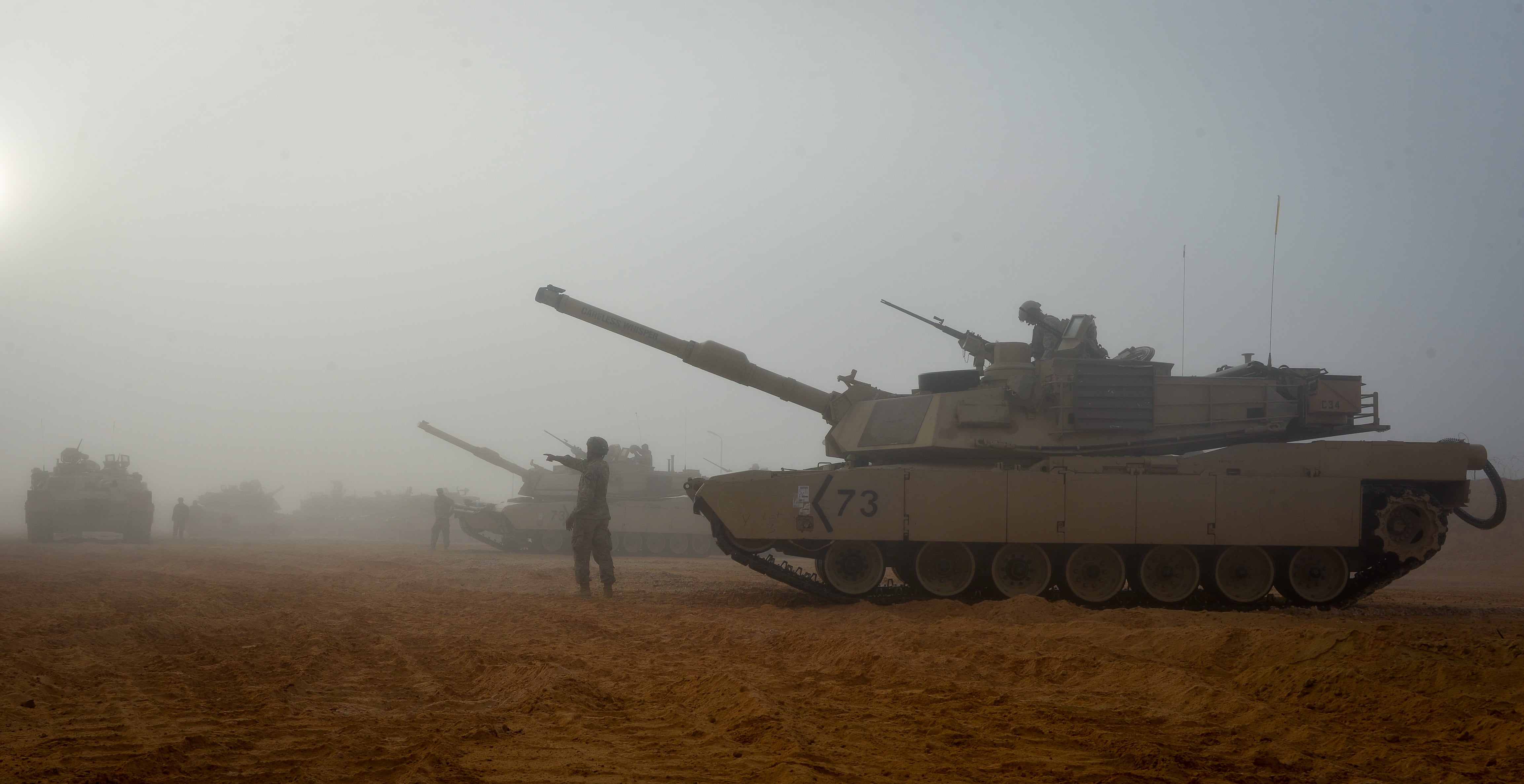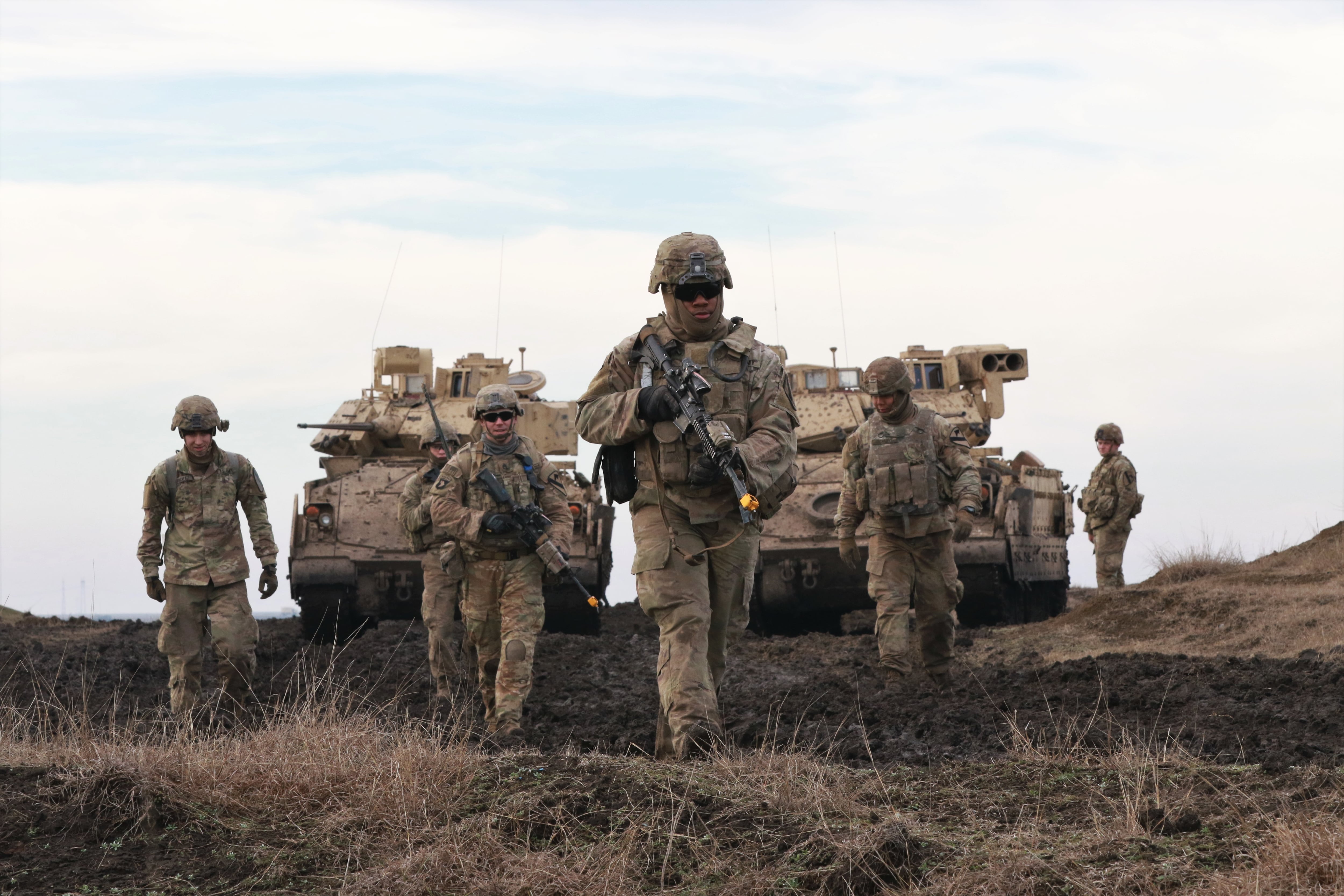Cavalry soldiers are preparing to begin a pilot program this year that could presage the future of Army divisions as the service rebuilds itself to fight peer adversaries at the corps level.
Maj. Gen. John B. Richardson recently discussed the work that 1st Cavalry Division has been doing at Fort Hood, Texas, to modernize the Army’s division as a warfighting unit during the service’s transition from two decades of counterinsurgency and counterterrorism operations to conventional wars against peer adversaries.
Richardson gave a sneak peek during the 2022 Maneuver Warfighter Conference at Fort Benning, Georgia, on Feb. 16 of the formation he’s been tasked with designing and handing off to his replacement by 2024.
RELATED

The new 1st Cavalry set up, dubbed the “Penetration Division,” is aimed at filling gaps that arose both out of the focus on COIN and CT work, but also from the advances made by Russia and China in recent years.
As many as 17 “critical gaps” exist in the current design, Richardson said in his presentation.
Some of those include a lack of adequate tactical mobility to sustain, move and survive; a lack of deep sensing; no long-range fires convergence to destroy enemy anti-access/area denial platforms; a lack of sufficient attack and reconnaissance aviation assets or air assault at the scale needed for large combat operations; no organic electronic warfare capability at the brigade-level; no mobile short-range air defense or air defense artillery readily available to protect the maneuver force at the division level; no division-sized bridging capabilities; and a paltry ability to shape the deep fight with existing long-range fires.

The Army will kick off a Division Cavalry pilot program this year to conclude in late fiscal year 2023.
That effort will involve field exercises near the conclusion of the pilot. At the same time, an effort to build up the Medium Short Range Air Defense, or M-SHORAD, capabilities within the division has already begun, Richardson showed Maneuver Warfighter Conference attendees through a series of slides.
From that pilot, decisions by top Army leaders will trigger unit redesigns incorporating changes to division headquarters, armored brigade combat teams, engineer units, artillery formations, and activating the Army’s new Extended Range Cannon Artillery.
A cavalry squadron’s whole purpose, Richardson explained, is to enable the division to contact the enemy “on our terms” in large-scale combat. The squadron will continue being the “eyes and ears” of the division, doing its cross-domain reconnaissance, security and economy of force missions.
Even Richardson was on the fence as to whether the current name — penetration division — is the right term.
“We’re an element of the exploitation, but have we named this correctly?” Richardson asked. “Is it really a penetration division or is it an exploitation division?”
The idea is to first “penetrate” with long-range fires and then push units into deep penetration to disintegrate the enemy’s defenses.
The penetration approach differs from the historical norm.
Richardson compared the standard envelopment, flank attack and turning movement options, which are less risky but don’t provide as much reward in the rapidity and depth of disintegration of enemy forces as a penetration approach.

While quick action is essential in this method of combat, so is follow-through. And that’s where Richardson sees the role of the Army’s division, especially its cavalry, making a joint fight with major ground operations work.
“Critical to a successful penetration is the execution of an exploitation, a type of offensive operation that follows a successful attack, designed to disorganize the enemy in-depth and win decisively,” Richardson said.
The key is speed, momentum and leveraging multidomain capabilities to reveal enemy position and assets.
The still-forming plans would make armored brigade combat teams and cavalry squadrons separate pieces. The cavalry squadron will hold about 947 soldiers and will detach from its current place within the ABCT structure. The ABCT would contain an armored cavalry troop of 182 soldiers along with six battalion scout platoons of 36 soldiers each and associated support units, such as headquarters and maintenance.
The squadron would also add two air cavalry troops to get more recon depth and operational reach, Richardson said.
Each brigade within the division will get its own armored cavalry troop as part of its reconnaissance and surveillance assets, he said.
In this plan, the division would deploy the cavalry on the flanks of the ABCTs to perform recon and security. Typically, that role would provide about an 18-30-kilometer cushion of awareness for the division. But with the arrival of new multi-domain operations capabilities, Richardson said that the same unit can provide up to a 60-kilometer screen for the division.

The way the Army envisions their role in the future fight flows as follows:
- Joint forces and Army long-range fires strike enemy operational fires.
- Army ground units then move into the area, “stimulating” more responses from enemy positions and platforms.
- U.S. and allied fires continue to strike as the division works as the main maneuver element, finding and hitting the remaining enemy anti-access/area denial systems.
One challenge ahead for Richardson is getting all elements of the division freed up to do the reorganization. That’s tough when two of his sustainment companies are on deployment — his combat aviation brigade is currently in Europe and his division artillery is still spread out across the brigades.
To experiment with the changes, the division must be taken off the deployment calendar, as well as major pre-deployment training exercises. That doesn’t mean those soldiers get a true break, though.
As part of the next two years of work, the reorganized unit will perform multiple field training exercises, most in 2023. Then there will be a validation exercise at the National Training Center at Fort Irwin, California, the same year, Richardson said.
The validation exercise is key, because if the unit doesn’t train together as a true division, the changes won’t be properly tested.
The unit has “to go and fight as a team,” or they’ll keep fighting as though they’re still in brigade combat teams and not as a division, Richardson said.
“We will build, reorganize, train and certify this division cavalry during my tenure and pass before fiscal year 2024,” Richardson said. This will give the next commander of 1st Cavalry Division a reformed unit, “turnkey ready on day one.”
Todd South has written about crime, courts, government and the military for multiple publications since 2004 and was named a 2014 Pulitzer finalist for a co-written project on witness intimidation. Todd is a Marine veteran of the Iraq War.





